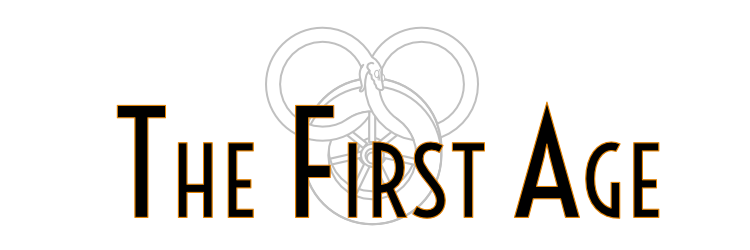11-06-2013, 07:19 PM
I wanted to clear something up that perhaps I didn't explain very well. The atharim's ouroboros tattoo is wildly different from person to person. Its individualized to the person's liking. The only similarity is the location. the inner left forearm.
Furthermore, dragons and snakes are incredibly popular. There will be many, many people with the image tattooed on them, probably even on an arm, who are not Atharim.
Likely some people have a simple little circle, of the plain, thin snake eating its own tail, but others will have full tattoo sleeves with a tiny, hidden image of a the symbol hidden among a more complex, full tattoo. For instance, Nikolai's was a long, slender shape with a single twist in the center more like an infinity symbol and looks much more like a dragon than a snake.
So you can see how the concept of many people all bearing the exact same tattoo going overlooked all this time is kind of a false notion. As any and all of these below in any range of sizes, even encircling the arm itself, could count as an 'atharim' tattoo. Likewise consider the history of tattooing as well. It's widespread practice was not adopted until the last century.
![[Image: 42518e51-51ab-4985-bd0a-fa7b7610f0ef_zps9028174b.jpg]](http://i1334.photobucket.com/albums/w643/thefirstage/42518e51-51ab-4985-bd0a-fa7b7610f0ef_zps9028174b.jpg)
![[Image: 9b9d5525-bbe5-48d9-b47d-ae27f733bfa0_zps8149e9c0.jpg]](http://i1334.photobucket.com/albums/w643/thefirstage/9b9d5525-bbe5-48d9-b47d-ae27f733bfa0_zps8149e9c0.jpg)
![[Image: 848f39a1-7f21-4dc5-a9d9-5818e963e46b_zpsead33ec7.jpg]](http://i1334.photobucket.com/albums/w643/thefirstage/848f39a1-7f21-4dc5-a9d9-5818e963e46b_zpsead33ec7.jpg)
![[Image: 7cef6568-6119-4922-bcf5-583beb4851ca_zps570a16ef.jpg]](http://i1334.photobucket.com/albums/w643/thefirstage/7cef6568-6119-4922-bcf5-583beb4851ca_zps570a16ef.jpg)
Furthermore, dragons and snakes are incredibly popular. There will be many, many people with the image tattooed on them, probably even on an arm, who are not Atharim.
Likely some people have a simple little circle, of the plain, thin snake eating its own tail, but others will have full tattoo sleeves with a tiny, hidden image of a the symbol hidden among a more complex, full tattoo. For instance, Nikolai's was a long, slender shape with a single twist in the center more like an infinity symbol and looks much more like a dragon than a snake.
So you can see how the concept of many people all bearing the exact same tattoo going overlooked all this time is kind of a false notion. As any and all of these below in any range of sizes, even encircling the arm itself, could count as an 'atharim' tattoo. Likewise consider the history of tattooing as well. It's widespread practice was not adopted until the last century.
![[Image: 42518e51-51ab-4985-bd0a-fa7b7610f0ef_zps9028174b.jpg]](http://i1334.photobucket.com/albums/w643/thefirstage/42518e51-51ab-4985-bd0a-fa7b7610f0ef_zps9028174b.jpg)
![[Image: 9b9d5525-bbe5-48d9-b47d-ae27f733bfa0_zps8149e9c0.jpg]](http://i1334.photobucket.com/albums/w643/thefirstage/9b9d5525-bbe5-48d9-b47d-ae27f733bfa0_zps8149e9c0.jpg)
![[Image: 848f39a1-7f21-4dc5-a9d9-5818e963e46b_zpsead33ec7.jpg]](http://i1334.photobucket.com/albums/w643/thefirstage/848f39a1-7f21-4dc5-a9d9-5818e963e46b_zpsead33ec7.jpg)
![[Image: 7cef6568-6119-4922-bcf5-583beb4851ca_zps570a16ef.jpg]](http://i1334.photobucket.com/albums/w643/thefirstage/7cef6568-6119-4922-bcf5-583beb4851ca_zps570a16ef.jpg)





![[Image: 1.png]](http://b3.ifrm.com/static/emo/1.png) Good idea because I wouldn't want him to be spreading any misconceptions. Jon's knowledge of the Atharim is very far removed from the source so he's a bit of an unreliable narrator.
Good idea because I wouldn't want him to be spreading any misconceptions. Jon's knowledge of the Atharim is very far removed from the source so he's a bit of an unreliable narrator.